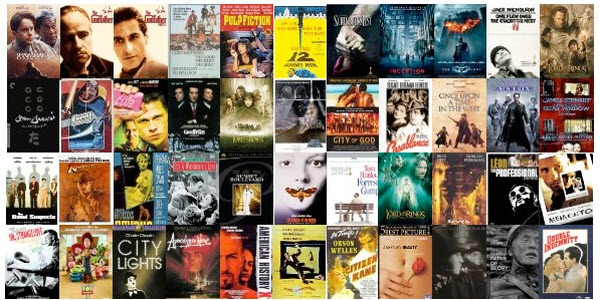The Internet Movie Database (IMDb) is one of the most renowned online platforms dedicated to the world of cinema and television. It houses an extensive repository of information about films, TV shows, and industry professionals, both in front of and behind the camera. Users can rate and review movies and series, making IMDb a go-to resource for entertainment enthusiasts. Despite its global fame, IMDb’s beginnings were modest, starting in the early 1990s as a film database managed by film enthusiasts on the Usenet discussion system. The database later migrated to the burgeoning internet, and with its growth and unique content, IMDb became a subsidiary of Amazon. As of mid-2022, the site contains data on over 10 million films and TV shows, more than 11.5 million industry professionals, and boasts over 83 million registered users.
Accessibility and User Contributions
IMDb stands out for its accessibility, allowing visitors to access information about films, TV series, and industry professionals. Registered users enjoy additional privileges, including the ability to submit new content and suggest changes to existing data. Most of the site’s data is contributed by volunteer users. However, the addition and removal of photos, title edits, actor and crew details, character names, and film summaries require approval, typically taking between 24 to 72 hours. Registered users can also rate films on a scale from 1 to 10, with these ratings averaged to provide an overall score. Additionally, users can create lists of their favorite films.

History of IMDb
Pre-Internet Era
The concept of IMDb began in 1990, inspired by a Usenet discussion post titled “Those Eyes,” created by British computer programmer and film enthusiast Col Needham. His post, which highlighted actresses with beautiful eyes, quickly gained traction among other users with similar interests. Needham later expanded this to include a “List of Actors,” followed by Dave Knight’s “List of Directors” and Andy Craig’s “List of Actresses.” Initially limited to living film professionals, these lists soon included retired individuals, evolving into comprehensive directories. By late 1990, the lists covered approximately 10,000 films and TV shows, leading Needham to develop a software version of the database, which became known as IMDb (initially “rec.arts.movies”).
The Internet Era
As the internet evolved, IMDb expanded its database to include additional categories, such as filmographies and biographies, and integrated movie ratings. By 1993, IMDb transitioned to the World Wide Web under the name “Cardiff Internet Movie Database,” hosted on Cardiff University’s computer science department servers in Wales. Rob Hartill designed the original web interface. In 1994, the site improved its email interface to accept new information, allowing updates via email and dividing information among multiple department managers based on film categories. IMDb grew significantly over the following years, becoming accessible worldwide.

Acquisition by Amazon
In 1998, Jeff Bezos, founder of Amazon, acquired IMDb through a deal with Needham and other major stakeholders, paying $55 million for IMDb and two other companies. This acquisition allowed IMDb to expand its online presence, including selling DVDs and VHS tapes. In January 2002, IMDb introduced IMDbPro, a subscription service targeting entertainment professionals with features like film production details, box office information, and a company directory.
To incentivize users, starting in 2003, those identified as “Top 100 Contributors” received free access to IMDbPro for the following year. This number increased to “Top 150 Contributors” in 2006 and “Top 250 Contributors” in 2010. In 2008, IMDb launched its first foreign-language site, IMDb.de, in German, and acquired Withoutabox and Box Office Mojo.
IMDbPro Service
IMDbPro is a paid service that allows actors, crew members, and industry executives to post their resumes and upload photos for an annual membership fee. Access to IMDbPro costs $150 annually, granting users access to detailed industry rankings and contact information for agents and other professionals.

Content and Structure
Volunteers contribute content to IMDb while retaining copyright for their contributions. However, the assembled content becomes the exclusive property of IMDb, which reserves the right to copy, modify, and license it. Information is verified before publication, with corrections made as needed. IMDb also provides English film titles, with non-English titles initially displayed in their original language. Since 2010, users in the UK and the US can choose to display titles in either their original language or the English release title.
Ratings and Lists
IMDb offers a rating system where users can rate films from 1 to 10, with ratings averaged to produce a weighted average displayed on each film or show page. The specific method for calculating ratings is not detailed to prevent manipulation. IMDb also maintains a list of the “Top 250 Films,” selected based on factors like average rating, number of voters, and a minimum threshold of votes (approximately 25,000). This prestigious list includes a broad range of films, excluding documentaries, short films, and TV episodes, which have their own separate lists since 2015.

In addition to the top-rated list, IMDb features a list of the 100 worst films, based on a similar process but requiring only 10,000 votes for inclusion.
In 2001, IMDb introduced message boards for film discussions, available only to registered users. However, by February 2017, all message boards were removed due to declining user engagement and high operational costs. The decision faced considerable opposition but was implemented, with Archive.org and MovieChat.org retaining the content of IMDb’s message boards.
